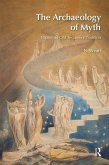The central premise of this book is that biblical Hebrew narrative, in terms of its structure, tends to operate under similar mechanical constraints to those of a stage-play; wherein space is central, characters are fluid, and objects within the narrative tend to take on a deep internal significance. The smaller episodic narrative units within the Hebrew aesthetic tend to grant primacy to space, both ideologically and at the mechanical level of the text itself. However space, as a determinate structural category, has been all but overlooked in the field of biblical studies to date; reflecting perhaps our own inability, as modern readers, to see beyond the dominant cinematic aesthetic of our times. The book is divided into two major sections, each beginning with a more theoretical approach to the function of narrative space, and ending with a practical application of the previous discussion; using Genesis 28.10-22 (the Bethel narrative) and the book of Ruth respectively, as test cases.








